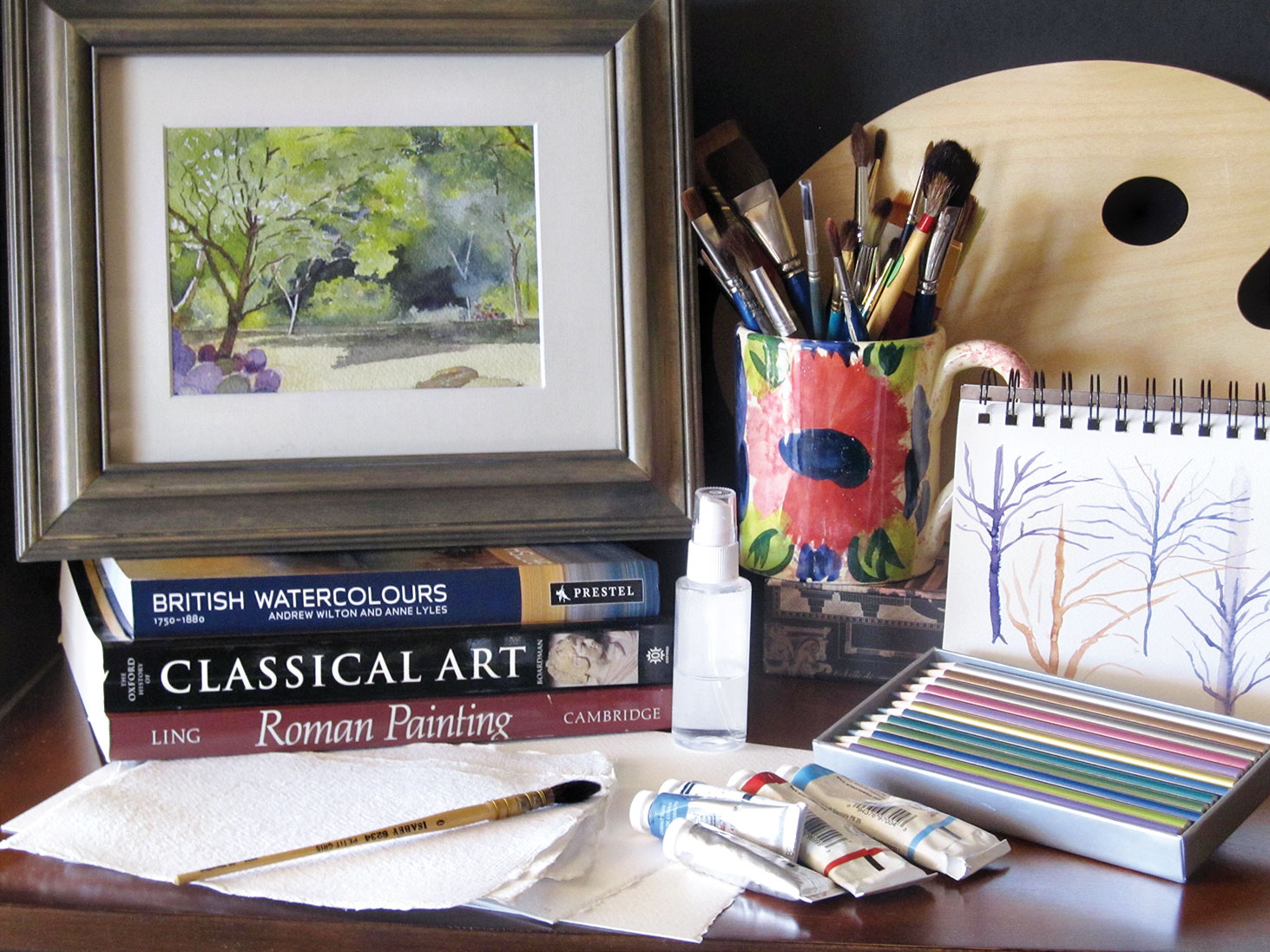 Marianne Graff
Marianne Graff
The PebbleCreek Art Club is pleased to present a Summer of Watercolor exhibit. Watercolor, and PC artists who work in this unique medium, will be featured throughout the summer months. For the month of June, we will highlight the origins, tools and special features of watercolor painting.
Watercolor refers to both the medium and the resulting artwork. It is a paint derived from pigments, suspended in a gum arabic and executed with water. Its most common support—the foundation for the paint—is paper, but watercolor can also be painted on other materials such as wood, canvas, fabric and plastics. Some of the tools used to produce a painting include brushes, tubes of colors, palette, paper, pencils and water. In addition, books, tapes and workshops are some of the many resources available to help interested artists.
Watercolor is a singular medium. According to Zoltan Szabo, “Watercolor differs from other painting media because of its transparency. This means that the bright whiteness of your paper reflects the light through the thin layer of your paint. Watercolor is at its best when it results in transparency—that is, when the paper shows through.” This medium is considered quite exciting, chiefly because, in the words of John Pike, “Watercolor has an ‘action’ all its own. It moves, it crawls, and it fights back.” And he notes that it is a challenge for the artist to influence the flow of the water with skill and techniques.
Watercolor has an outstanding world encompassing pedigree. Its origins are said to date back in time to Paleolithic cave paintings. Humans painted pigments suspended in liquid on walls to capture images and symbols representing their environment and everyday experience. Watercolor has also been traced to Asia for landscape scroll painting and Egypt and the European Middle Ages for their manuscript illustrations. According to Wikipedia, watercolor emerged as a continuous art form in the Renaissance. Early painters included Albrecht Durer {1471-1528}
who produced botanical, wildlife and landscape watercolors. Though during the Baroque period watercolor was often used for sketches or copies, many noted Dutch, Flemish and Italian artists emerged, among them Van Dyck, Claude Lorrain, and Giovanni Benedetto Castiglione. Their preferred subjects included botanicals and wildlife illustrations which reached a peak in the 19th century with John James Audubon.
Watercolor emerged in England during the 18th century. Among the elites, according to Wikipedia, watercolor painting was considered an adornment of a good education and used by mapmakers and the military for depicting terrain, fortifications, and public works. William Gilpin wrote popular journals that depicted watercolors of river valleys, ancient castles and abandoned churches. William Blake provided illustrations to his Dante’s Inferno and experimented with large monotype works in watercolor. According to Wikipedia, “Watercolor became embraced as a distinctly English ‘national art.’”
Subsequent articles will describe the later aspects of English watercolor painting as well as important artists and their influence on American watercolor painting. You are invited to view the paintings on display in the Creative Arts Center and in the Tuscany and Eagle’s Nest clubhouses.
